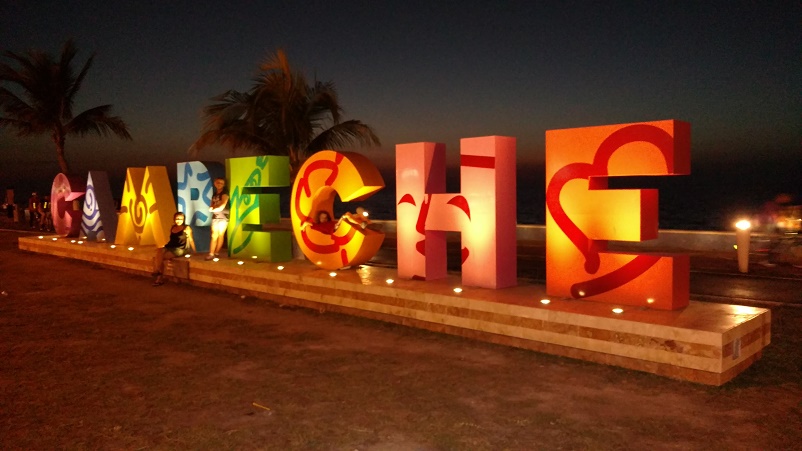Pirates, a Wall, and a Light Show in Campeche, Mexico
/Exploring the Yucatan Peninsula has long been on my list. What could be better than visiting cities and towns dotted along the shores of the Gulf of Mexico and the Caribbean Sea? After being in the mountains for several months, I longed for the sight of water - clear, blue, crystal water.
The first stop of our 3 month Yucatan Peninsula tour was Campeche, a small colonial town on the shores of the Gulf of Mexico. In the 16th century the Spaniards ruled Campeche. They conquered the indigenous Mayans but were plagued by frequent attacks from pirates. In an attempt to protect the town (and themselves), the Spaniards built a wall around it. Once complete, the Spaniards lived inside the confines of the wall and left the native Mayans on the outside in the barrios (neighborhoods) surrounding the wall.
Significant portions of the wall still exist, and other parts of it are being rebuilt. We began our historic tour of Campeche with a walk to the Centro Historico de San Francisco (basically this is the zocalo or city center inside the old wall). The Centro has a center square with a park like atmosphere, several local businesses, museums and the Cathedral de Campeche surrounding it.
This little girl was happily feeding rice to the pigeons. There were at least 200 in her surrounding vicinity. That is until Tag and two other boys tried to run them off (and did...several times).
Along the Centro was Casa No. 6, a museum staged as an example of a typical colonial home where a wealthy family may have lived. Colonists from Spain were used to decorating with wallpaper. Due to the humid climate in Campeche, this wasn't possible. Instead, they often painted the walls to look like wallpaper. You can see this in the bedroom picture.


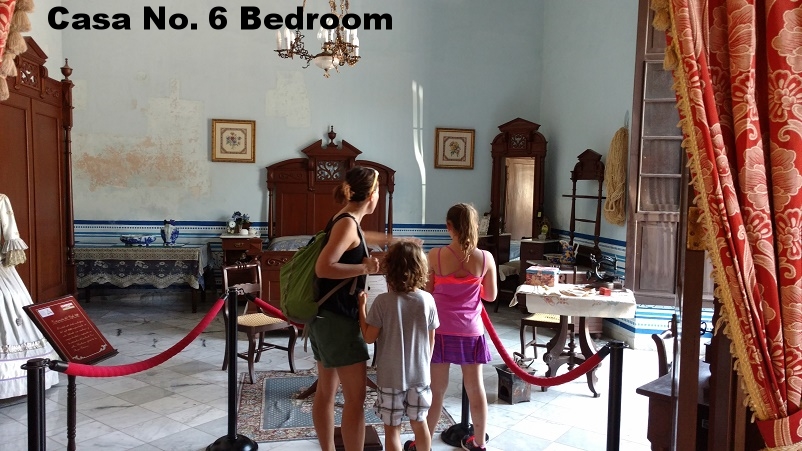
Next, we went to a free museum sponsored by the government, called El Palacio Centro Cultural. The whole visit was a bit odd. There were several employed people throughout the museum that would walk us from one room to the next, opening doors and pointing the way, but they rarely spoke to us. They weren't really guards or docents. They just moved us along.
We enjoyed this replica of Campeche as it looked 400+ years ago.
We then entered the second room in the museum. To get there we had to go outside the building, down the corridor and back inside the building. We, and 8 other people, were immediately escorted into a room with a gated type door. The inside of the room was built to look like the hold of a ship. The door shut, the lights went off (while we didn't think anything bad was happening, it was odd not knowing), and the floor started to shift. A movie started on the side walls telling about the journey from Spain to Campeche. The room was like a Disney ride. Loud storms, thunder and lightning, calm seas, pirates, and of course a joyous landing in Campeche where the doors opened and we were let out of the hold.
The "hold" of the ship where it unexpectedly turned into an amusement park ride.
Overall, the museum had excellent visuals for the kids, and it was worth our time.
We spent the rest of the day walking the perimeter of the old city, visiting small museums and walking on top of the wall. It was interesting to learn that although the town had been frequently attacked by pirates, it didn't have a lot of wealth. Correspondence between those living in Campeche and those back in Spain discuss the level of poverty and struggles that existed in Campeche. Living in the west at that time didn't make for an easy life.

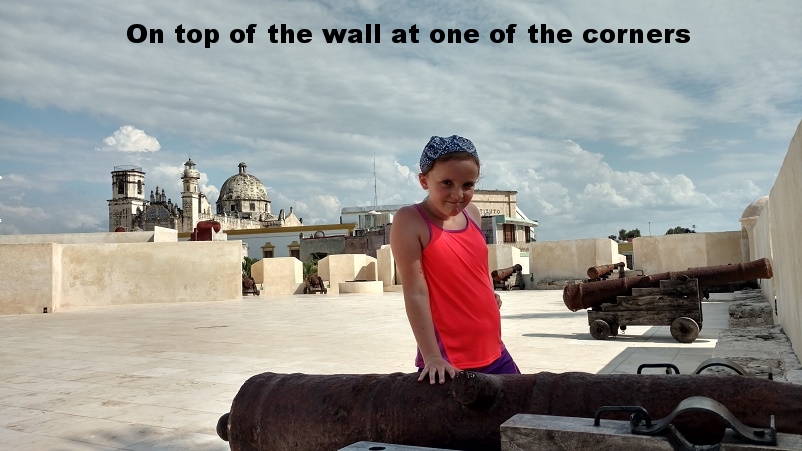

At 8 PM every night, there's an impressive sound and light show in the Centro. Four mounted projectors shot moving images and animations onto a building located on the west side of the square. The show depicted many stories and characters of historical significance to the town. It lasted an hour, was free, and very much worth watching.

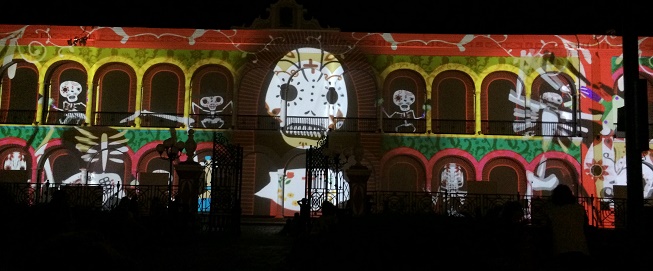
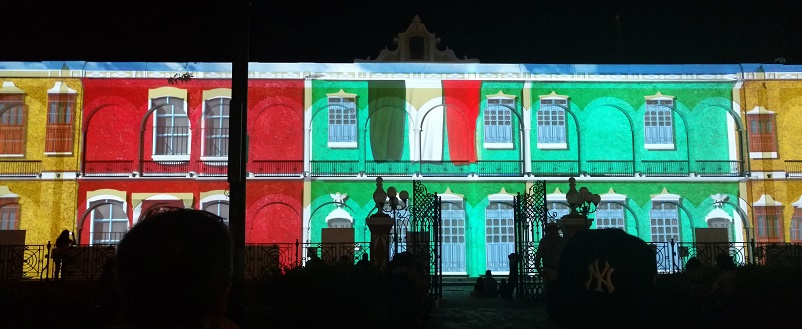
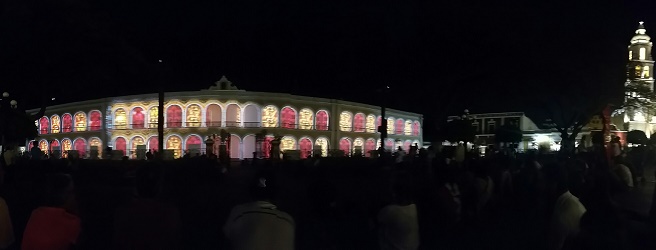
Prior to arriving in Campeche, we'd read about the town's malecon (boardwalk) along the Gulf of Mexico. Ela was especially looking forward to renting bikes and riding several miles along it. Sadly, she became furious when it never happened.
Before renting bikes we decided to scope out the malecon on foot. The smell was rancid. It was so bad that neither Ken nor I could fathom going back. This brought Ela to tears, but alas our senses were saved from repeating that foul experience. Too bad because the path had several scenic spots.
We had mixed reviews about the malecon of Campeche. As you can see, it's beautiful with lanes for biking, walking, and enjoying the views. However, much of it was accompanied with a foul smell and it was next to a busy 4-lane road.
The best part of the malecon -- taking pictures on this cute sign. Can you find three of us?
We spent several days in Campeche. It was a nice stop, but it's not known for swimming in its beautiful waters. It's coast is mostly rocky. It was time to grab a Starbucks coffee and hit the road again.






